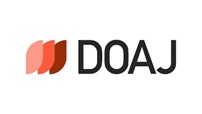Abstract
Motion pictures are so typical experience goods that consumers tend to look for more credible information. Hence, movie audiences consider movie viewers` reviews more important than the information provided by the film distributor. Recently many portal sites allow consumers to post their reviews and opinions so that other people check the number of consumer reviews and scores before going to the theater. There are a few previous researches studying the electronic word of mouth(eWOM) effect in the movie industry. They found that the volume of eWOM influenced the revenue of the movie significantly but the valence of eWOM did not affect it much (Liu 2006). The goal of our research is also to investigate the eWOM effects in general. But our research is different from the previous studies in several aspects. First, we study the eWOM effect in Korean movie industry. In other words, we would like to check whether we can generalize the results of the previous research across countries. The similar econometric models are applied to Korean movie data that include 746,282 consumer reviews on 439 movies. Our results show that both the valence(RATING) and the volume(LNMSG) of the eWOM influence weekly movie revenues. This result is different from the previous research findings that the volume only influences the revenue. We conjectured that the difference of self construal between Asian and American culture may explain this difference (Kitayama 1991). Asians including Koreans have more interdependent self construal than American, so that they are easily affected by other people`s thought and suggestion. Hence, the valence of the eWOM affects Koreans` choice of the movie. Second, we find the critical defect of the previous eWOM models and, hence, attempt to correct it. The previous eWOM model assumes that the volume of eWOM (LNMSG) is an independent variable affecting the movie revenue (LNREV). However, the revenue can influence the volume of the eWOM. We think that treating the volume of eWOM as an independent variable a priori is too restrictive. In order to remedy this problem, we employed a simultaneous equation in which the movie revenue and the volume of the eWOM can affect each other. That is, our eWOM model assumes that the revenue (LNREV) and the volume of eWOM (LNMSG) have endogenous relationship where they influence each other. The results from this simultaneous equation model showed that the movie revenue and the eWOM volume interact each other. The movie revenue influences the eWOM volume for the entire 8 weeks. The reverse effect is more complex. Both the volume and the valence of eWOM affect the revenue in the first week, but only the volume affect the revenue for the rest of the weeks. In the first week, consumers may be curious about the movie and look for various kinds of information they can trust, so that they use the both the quantity and quality of consumer reviews. But from the second week, the quality of the eWOM only affects the movie revenue, implying that the review ratings are more important than the number of reviews. Third, our results show that the ratings by professional critics (CRATING) had negative effect to the weekly movie revenue (LNREV). Professional critics often give low ratings to the blockbuster movies that do not have much cinematic quality. Experienced audiences who watch the movie for fun do not trust the professionals` ratings and, hence, tend to go for the low-rated movies by them. In summary, applied to the Korean movie ratings data and employing a simultaneous model, our results are different from the previous eWOM studies: 1) Koreans (or Asians) care about the others` evaluation quality more than quantity, 2) The volume of eWOM is not the cause but the result of the revenue, 3) Professional reviews can give the negative effect to the movie revenue.
Recommended Citation
Bae, Jung Ho; Shim, Bum Jun; and Kim, Byung Do
(2010)
"온라인 구전과 영화 매출 간 상호영향에 관한 연구,"
Asia Marketing Journal: Vol. 12
:
Iss.
2
, Article 1.
Available at: https://doi.org/10.53728/2765-6500.1253
Creative Commons License

This work is licensed under a Creative Commons Attribution 4.0 License.





